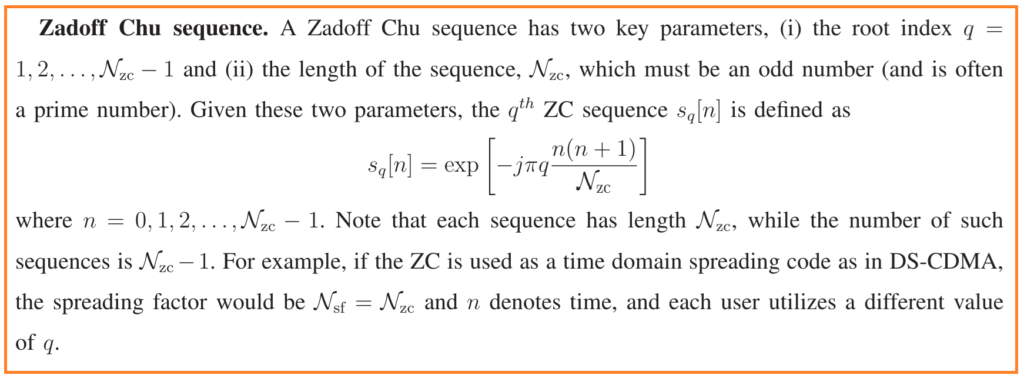Introduction
Long Term Evolution (LTE) is a key technology for high-speed wireless communication, and Zadoff-Chu (ZC) sequences play a crucial role in its efficiency and performance. ZC sequences, known for their unique properties, are extensively used in LTE for various functions such as synchronization, random access, and channel estimation.
What is a Zadoff-Chu Sequence?
A Zadoff-Chu sequence is a type of complex-valued sequence with constant amplitude and unique phase shifts. It is mathematically defined as:

These sequences have several desirable properties that make them ideal for communication systems.
Key Properties of Zadoff-Chu Sequences
- Constant Amplitude: All elements in a ZC sequence have the same magnitude, which helps in reducing the peak-to-average power ratio (PAPR) in transmission.
- Zero Cyclic Autocorrelation: ZC sequences have zero autocorrelation for all non-zero shifts, minimizing interference and improving detection accuracy.
- Fixed Cyclic Cross-Correlation: Different ZC sequences of the same length have fixed and low cross-correlation values, ensuring minimal interference between sequences.
- DFT and IDFT Properties: The Discrete Fourier Transform (DFT) and Inverse Discrete Fourier Transform (IDFT) of a ZC sequence are also ZC sequences, which is beneficial for implementations in frequency domain-based systems like OFDMA and SC-FDMA.
Applications in LTE
ZC sequences are used in various aspects of LTE, including:
- Physical Random Access Channel (PRACH):
- PRACH uses ZC sequences for preamble generation, ensuring robust detection in multipath environments.
- The zero autocorrelation property ensures efficient use of the frequency spectrum and accurate detection by the base station (eNodeB).
- Uplink Control Information (PUCCH):
- ZC sequences are used for generating reference signals for uplink control information.
- These sequences ensure minimal interference and accurate channel estimation.
- Uplink Reference Signals (RS):
- Reference signals for channel estimation, like Sounding Reference Signals (SRS) and Demodulation Reference Signals (DM-RS), use ZC sequences.
- The orthogonal properties of ZC sequences allow multiple users to transmit simultaneously without interference.
Conclusion
Zadoff-Chu sequences are integral to the LTE system, providing a foundation for efficient and reliable communication. Their unique properties, including constant amplitude, zero cyclic autocorrelation, and fixed cyclic cross-correlation, make them ideal for applications in initial access, uplink control, and channel estimation. As LTE continues to evolve, the role of ZC sequences remains pivotal in ensuring high performance and robust connectivity.